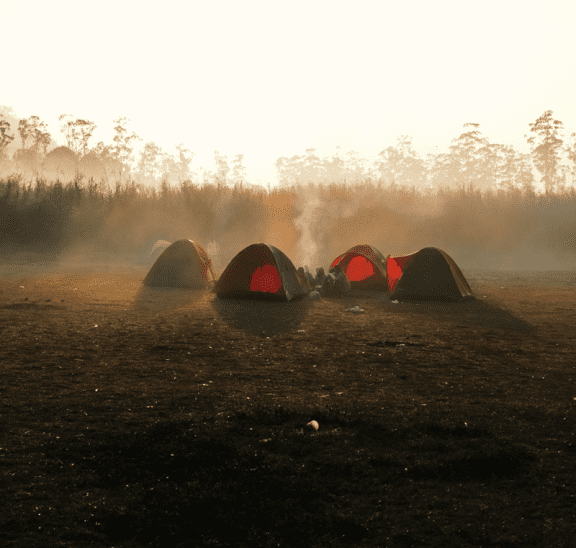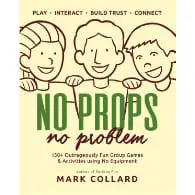20+ Fun & Engaging Ways to Form Random Pairs
So you’ve asked your group to pick a partner so that you can form smaller teams and… they immediately make a beeline to their best…

You are probably aware of the popular group development model published by Bruce Tuckman, the rhyming schema of Forming, Storming, Norming, Performing and Transforming/Mourning.
This model is extremely powerful and instructive to group facilitators because it can help guide our decisions about the sequence of a set of planned experiences (see GRABBSS model for more information.)
You may also be familiar with the concept of Adventure Therapy, or in the case of Australia, Bush Adventure Therapy. This field and practice are focused on the therapeutic benefits of immersing groups and individuals in the outdoors and adventure-based experiences.
Recently, I stumbled across some research conducted by the University of Arkansas that studied the group development process of adventure therapy groups. The question posed was: do adventure therapy groups follow a similar group development process as prescribed by Bruce Tuckman’s model.
David Christian lead a small research team, and reprinted with their permission is an abstract of their study.
Although many Adventure Therapy (AT) facilitators assume that their groups follow a similar developmental process as traditional group counseling (Gass et al., 2012; Project Adventure, 2007; Schoel & Maizell, 2002), there is a dearth of evidence to support this claim (Gass et al., 2012). A limited amount of research does exist indicating a relationship between AT and group cohesion (Glass, 2008; Glass & Benshoff, 2002), however additional research is necessary to better understand the group development process that occurs in AT (Gass et al., 2012).
The purpose of this study was to explore how AT participants perceived the group developmental process and determine if AT does indeed follow a developmental process similar to traditional group counseling.
The model of group development that many AT facilitators follow is known as Tuckman’s (1965) model. This model consists of five stages: forming, storming, norming, performing, and adjourning/transforming. Facilitators use these stages to conceptualize and promote group development and effectiveness. Specifically, understanding the stages of group development helps facilitate the meeting of strangers and subsequent working together to effectively and efficiently accomplish desired outcomes.
Three constructs thought to be present throughout the group counseling process are avoidance, conflict, and cohesion (Mackenzie, 1983). A high measure of avoidance and low measures of conflict and cohesion often accompany the initial stage of group, known as forming. As groups progress beyond this stage, members often avoid therapeutic tasks and conflict naturally arises in the storming stage and decreases as the group develops.
Successful resolution of the storming stage results in increased cohesion amongst group members (Bakali et al., 2013; Ohrt, Robinson, & Hagedorn, 2013). As members develop trust, group cohesion increases, and conflict and avoidance decrease. During this norming stage, group members will have struggled with conflict, shared pain, and committed to taking risks. During the performing stage, the group is operating effectively and proficiently.
Successful resolution of previous stages should result in lower levels of avoidance and conflict (Bakali et al., 2013; Ohrt et al., 2013). Finally, adjourning/transforming, also known as termination, marks the ending of the group. Research indicates that groups with lower levels of avoidance and conflict and higher levels of cohesion are more beneficial for members (MacKenzie et al., 1987; Yalom & Leszcz, 2005; Young, Reysen, Eskridge, & Ohrt, 2013).
During this study, we explored the group developmental process of AT groups conducted with 9th grade students (n=20) by measuring avoidance, conflict, and cohesion and comparing results from this study to the development of traditional counseling groups based on Tuckman’s (1965) model. We hypothesized that AT participants would perform behaviorally and emotionally similar to those in traditional group counseling. We tested our hypothesis using the Group Climate Questionnaire Short Form (GCQ-S; MacKenzie, 1983) with AT groups conducted in a high school setting.
We believed that avoidant behavior would decrease, conflict would initially increase and then decrease, and engagement/cohesion would increase throughout the duration of the group. In order to test this hypothesis, we utilized a time-series design measuring the three scaled scores produced by the GCQ-S pre-group, mid-group, and post-group. Results suggested that AT groups follow a similar developmental process as traditional group counseling as evidenced by a statistically significant increase in engagement/cohesion, an increase then decrease in conflict, and a decrease in avoidance.
The results of our study suggest that AT facilitators should use established models of group development, such as Tuckman’s (1965) model, to assess group development and sequence activities in a manner that fosters cohesion and engagement while providing opportunity for the group to engage in and resolve conflict. Facilitators should avoid engaging participants in activities that require high levels of trust in the initial meeting or too early in their programs.
Instead, results of this study emphasize the importance of facilitating activities with the understanding that members will likely manifest avoidant behavior most intensely in early in the process but, with appropriate sequencing of activities, will develop trust and engage in the group process and personal growth.
group climate / group development process / bruce tuckman / group development / adventure therapy / bush adventure therapy / david christian / university of arkansas

Best-selling book featuring 150+ fun group games & activities. Scan QR codes to access digital content including videos.

Brand new deck of cards featuring emoji images to help you inspire conversations about emotions, feelings & experiences.
Download our free 28-page ebook jam-packed with outrageously fun activity ideas.
Just one more question:
Share this with friends and colleagues.
We offer a range of membership plans with no surprises.
Click an option below & discover our simple pricing.

Click here if you’re a:

Click here if you represent a:
Explore plans for
10, 50, 200 or more
potential users